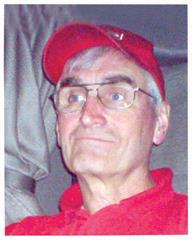
When I read the editorial from
our esteemed editor John White
in the May-June issue, at first, 140
hours of training for new truck drivers
seemed like a lot, but I suppose more is
better than not enough.
Back in the dim and distant past,
in the company I was working for,
National Carriers, I was one of the
employees selected to go for the class
1 licence training at their own school.
The fact that they had their own school
was the reason some of the drivers
applied for a job there. If you went for
training and got a class one, you were
supposed to stay for a year or pay back
the cost of the training. As usual, some
guys took advantage of a good thing
and left right after getting their licence
and let the company chase them for
the money. When you think about it
they were probably the no-class type of
driver the company was best without.
It was two weeks of classroom and
practical training in what looked like
an old railyard. At the end of the two
weeks, you got your test. Eight hours
a day for two weeks adds up to eighty
hours, so not too far off the 140 hours
of BC. The normal trailer length back
then was 40 feet, but the school used
30-foot trailers as was allowed by the
government testing stations. In their
big yard, the school had painted the
same grid as the testing station had.
The learners were supposed to drive forwards in an S
shape and stop
with the bumper
of the truck in the
middle of an eightfoot by two-foot
rectangle with the
truck and trailer
straight. Then it was the same in reverse,
stopping with the end of the trailer in
the middle of another rectangle. Again
the truck and trailer had to be straight.
There was no attempt to teach certain
routes as the testing station didn’t use
the same route all the time, the testers
had the whole of Glasgow to pick from.
Obviously, Glasgow has no mountains,
so steep hills were not in the curriculum,
although there was a steep hill not far
from the testing station. It was a single
track controlled by traffic lights at each
end, one of the guys on the course at
the same time as I got taken to this hill
by his tester.
As he approached the lights, they
turned to amber before going red, and
why he didn’t stop, we’ll never know.
He now had two or three hundred
yards of uphill driving, not knowing if
something would come over the brow
of the hill and collide head-on with him.
It was an instant fail for the poor guy.
It was the same for winter driving.
The only adverse weather you drove through was the Scottish rain, so there
was nothing in the course relating to
adverse weather. I think it was assumed
that steep hills and snow would all
come with experience if you got your
licence. As part of the practical training,
you were taught to hook up and drop
the trailer. Nothing was taught about air
brakes except how to connect the susies
(airlines) between the truck and trailer.
The six-speed truck and trailer bore
little resemblance to the top-weight
trucks you might be driving if, or when,
you got a class 1 licence. The outfit was
the bare minimum necessary to sit the
test in.
Of course, back in the good old
days, when you were an inexperienced
class 1 driver, there was no shortage of
other drivers willing to help you out.
Getting the licence was only the start of
becoming a truck driver, the experience
came as the years rolled on. Now it’s
a different world out there for rookie
drivers. To start with, they can’t get a
class 1 without first passing a class 3
test on a 17-ton GVW four-wheeler.
It’s back to how it used to be in the old
days, start small and work your way up.